A few remarks on making arrangements for string ensembles.
Arrangement of a song by Mieczysław Karłowicz „Idzie na pola” made for viola quartet
Musical arrangement is a process of preparing an existing written musical work to be performed in a different way or by different instruments. As a professional viola player I work very often with arrangements for string instruments, by playing or preparing them for mixed string ensembles. I would like to share some of my thoughts and observations made during the preparation of an arrangement of a song by Mieczysław Karłowicz. The song is for a voice and piano, it is tonal, in G major.
The first thing that an arranger has to consider while transferring a work to be played by different ensemble is the range of instruments used and what it implies – picking the most convenient and effective key. Ensemble of violas is quite difficult to arrange for, as the lowest pitch available is C3. Not having any bass notes below C3 means, that the harmonic structure has to be ‘squeezed’ and partially reduced. The arranger has to make a brief harmonical analysis to check if changing the key of the work will result in potential advantages or disadvantages. From my experience the best sounding major keys for viola ensembles are F major, C major and G major – the open C string(C3 sound) being either the tonic, subdominant or dominant bass note. Best minor keys are G minor and D minor.
I’ve decided not to change the original key of the work, as the viola is very resonant in tonic and dominant in G major. The singer’s part is played by first viola throughout the whole piece. The work starts with a two bar introduction which continues musical material later after the entrance of the soloist. The fifths in the left hand of the piano make a bell-like effect – transcribing them to open viola G and D string an octave higher even enhances the effect:
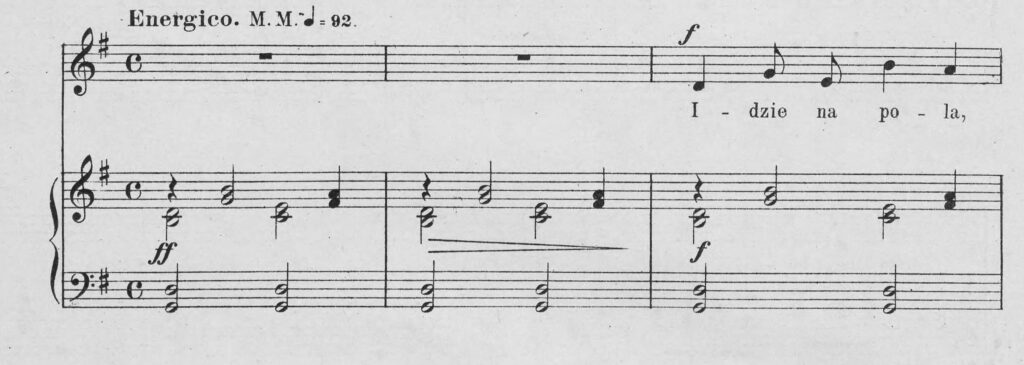
Ex.1 Mieczysław Karłowicz „Idzie na pola”, bars 1-3
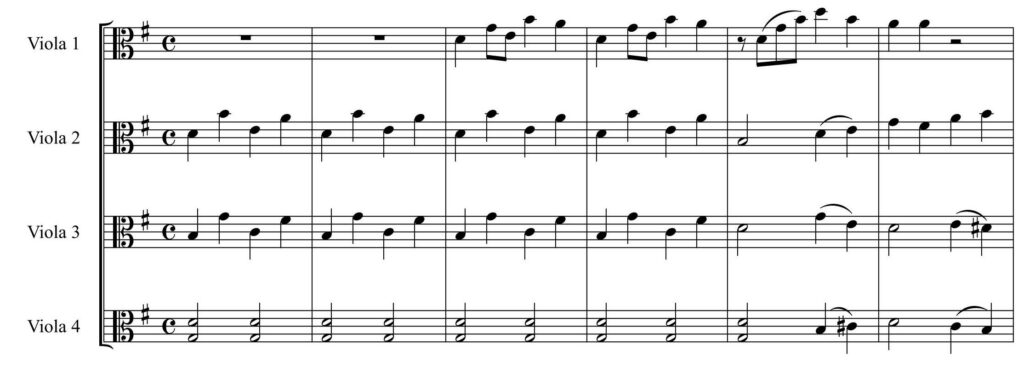
Ex. 2 Transcription for four violas, bars 1-6
There are some arranging difficulties in bars 5-6, the structure has to be reduced and tightened because of the lack of bass notes in viola, but the harmony is not incomplete, the most important components are present.

Ex. 3 Mieczysław Karłowicz „Idzie na pola”, bars 4-7
Another substantial reduction takes place in bars 11-15. In order to keep the harmony more rich I used double stops in violas 2 and 4. If the arranger decides to put double stops in string instruments’ parts, he has to be sure that what is written will be possible to play by musicians in the right way, with proper intonation and articulation. When you are not a string instrument player yourself it is always good to ask one for some advice on the instrumental capabilities to solve the problems with keeping the harmony as complete as possible.


Ex. 4 Mieczysław Karłowicz „Idzie na pola”, bars 8-14
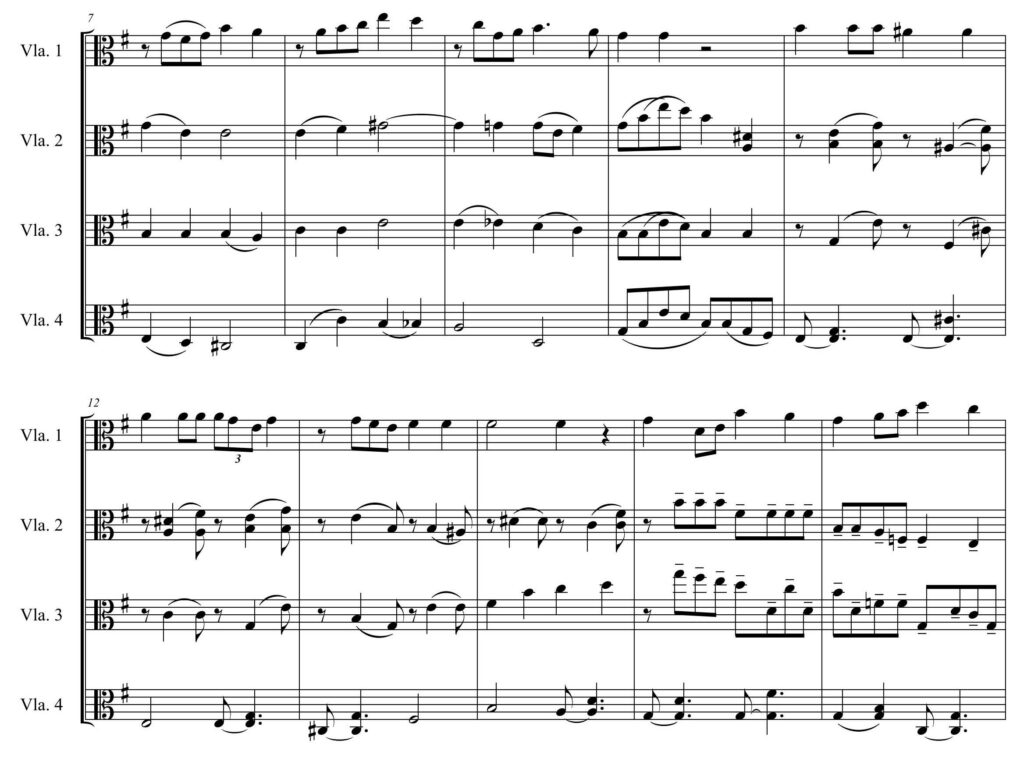
Ex. 5 Transcription for four violas, bars 7-16
A new issue with ‘squeezing’ the harmonic structure occurs in bars 15-16. The effective range of viola in chamber music, based on my experience, is C3 to C6. The piano part here has both higher and lower pitches than this range. As there are two important melodic lines, the vocal part and the highest part of the piano, more contrast than just different registers is needed. I proposed to use different articulation(portato) to make the contrast more audible.

Ex. 6 Mieczysław Karłowicz „Idzie na pola”, bars 15-18
As the vocal part ends in bar 19, the first viola joins the others in playing the piano ending. The left hand piano part, which is very wide and jumpy, is compressed in the fourth viola. Second viola takes the last reminiscence of the theme in bar 23 and fourth viola finishes with the last G major passage(bar 25).
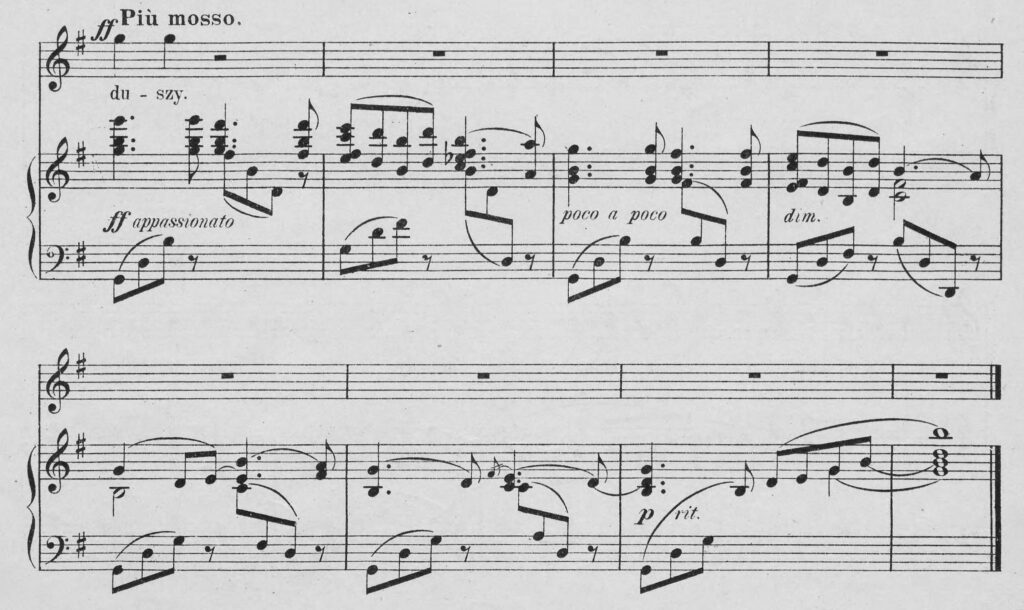
Ex. 7 Mieczysław Karłowicz „Idzie na pola”, bars 19-26
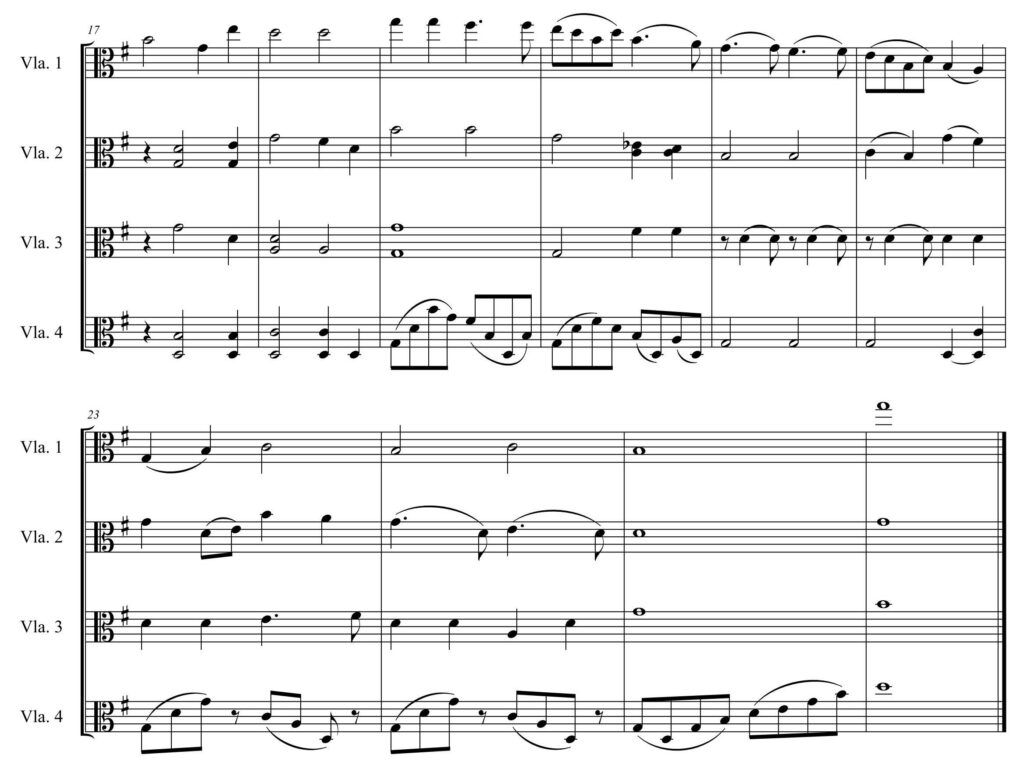
Ex. 8 Transcription for four violas, bars 17-26
I hope the few remarks I made on arranging music for strings will help or encourage musicians to create arrangements of their own. In my opinion doing arrangements is very inspiring and rewarding for all active performers and it vastly enhances the overall view and understanding of chamber music composition. I highly recommend trying to work with 18th century songs or small piano works, for example Grieg’s Lyriske stykker. An active, working musician is in a state of constant development and creating arrangements allows people to look at their musicianship and musical technique from a different angle.
Błażej Michna




